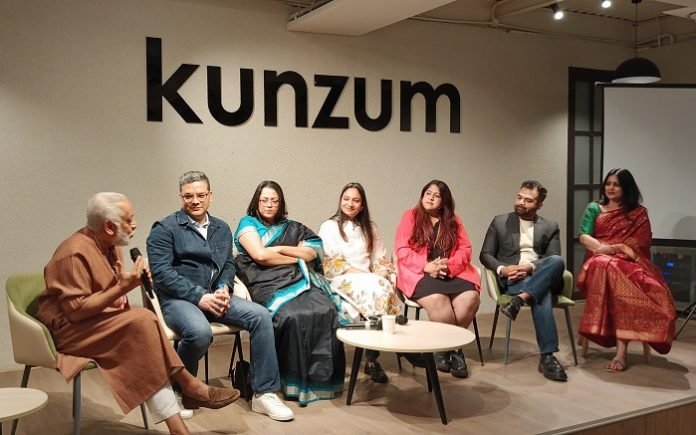
Food writing and the evolution of food shows formed part of the discussions at Kunzum Books and Wishbox’s Food Writers and Influencers Collective in Delhi in February 2025. An editor’s roundtable deliberated on the future of food writing on the first day where Dilip Cherian, image guru and fundamentalist foodie, was the moderator of the panel discussion.
Cherian compared food writing and TV shows such as Masterchef India and Laughter Chefs. Anindita Ghosh, editor, Outlook Traveller, said while food writing has its niche, TV programs have a mass market. Smita Mishra, editor, Times of India Lifestyle/Times Food, said she loves watching food shows for the drama but doesn’t even look at the food that they prepare.
Shubham Bhatnagar, editor – NDTV Food compared Indian TV food programs to modern-day cartoon shows. Cherian said while there is evolution, there is also devolution and the TV food programs fall into the latter category.
Deepali Verma, senior copy editor, HT Slurrp, said food shows have moved to Instagram reels and YouTube videos and the craft of fine writing on food is getting a more and more choked audience. To add a personal touch to keep food writings in the game, there is a need to make it more personal for serious readers who want to read in-depth stories.
Amin Ali, editor, Times Food Guide and Nightlife Guide, said food writing is not a personal experience. Most food writers are not able to entice the audience and need to work on making their writing more about food.
Bhatanagar said chatGPT is also sharing food recipes and summaries nowadays and so personalized food writing has to evolve. Samreen Tungekar, managing editor, Travel + Leisure, said every second person wants to write a review these days. “You can’t sell based on nostalgia beyond a point.”
Mishra said before the Covid-19 pandemic, readers wanted everything in a nutshell but they are looking for more nuanced stories now. Ghosh said travelogues and essays that revolve around food are going to be more personal and experiential. You can’t compete with reels and AI, he said.
Bhatnagar said while competing with Instagram reels and YouTube videos is both possible and desirable, people would still go to print for more deep-dive articles. Ghosh said fine food writing can be complimentary to reels and videos. Food fads come and go from time to time, she said, adding these days the vegan and plant-based foods fad is trending while a decade ago it was olive oil.
Tungekar said culinary travel expands our horizons in terms of what we are covering and what we are experiencing. People want to know which vegan dishes to try in a non-vegetarian restaurant.
According to Ali, one area in food writing that he doesn’t want to look at are comedy stints from chefs and posting anything and everything apart from their craft. “I don’t want to get carried away from my niche,” he said, adding food writers need to address the concerns facing the food industry.
Mishra said food is an art and it should be depicted in that manner. Cherian concluded by adding fine food writing has evolved 50 times more than what it was in the 1980s. Honesty is what you need in food writing today’s world.
The event was organized by Sourish Bhattacharyya, Pawan Soni, Nishant Choubey, Sadaf Hussain, Shibani Chand Sethi, Shibani Bawa and Pawan Hora.
















